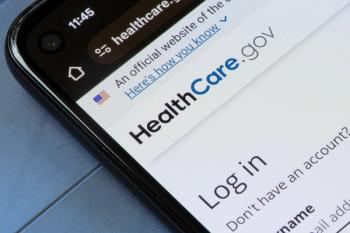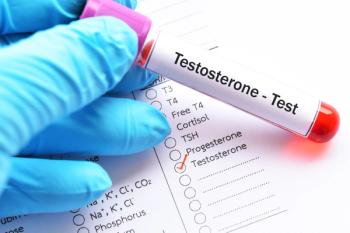
Many Cases of Adult-Onset T1D Are Diagnosed After Age 30, Study Finds
In the overall population of more than 1.3 million US adults, 37% of patients reported being diagnosed with T1D after 30 years, with men and racial or ethnic minorities diagnosed later compared with women and non-Hispanic White adults.
A recent study of patients with
Misdiagnosis is common in cases of adult-onset T1D, and those who are misdiagnosed with type 2 diabetes (T2D) do not receive the appropriate care for T1D management, the authors noted. Estimates based on emerging data indicate that up to 62% of T1D cases develop in patients older than 20 years,2 and the current study aimed to provide insight into the burden of adult-onset T1D among the general US population.
"Type 1 diabetes is typically considered a childhood disease," study author Elizabeth Selvin, PhD, MPH, co-director of the Cardiovascular Disease Epidemiology Training Program at the Johns Hopkins Bloomberg School of Public Health, told AJMC® in a written statement. "Our results suggest that a substantial portion of cases are diagnosed in adulthood. Adult-onset type 1 often presents with mild symptoms, and it can be a challenge to distinguish it from type 2 diabetes in those cases."
Selvin and colleagues at the Johns Hopkins Bloomberg School of Public Health in Baltimore, Maryland, utilized data from the National Health Interview Survey (NHIS) to explore the age distribution of T1D diagnosis in the United States. They combined all of the NHIS survey cycles that included diabetes subtype data (2016, 2017, 2019, 2020, 2021, and 2022), which encompassed approximately 1.3 million US adults.
The NHIS interviews collected data on patient demographics and medical information, and patients with diabetes reported on diabetes type, insulin use, and their age at diabetes diagnosis. The study included individuals at least 18 years of age who reported being diagnosed with T1D and currently using insulin.
Of the overall population, 947 individuals with T1D were identified. The median age at diagnosis and the percentages of patients diagnosed after 20, 30, and 40 years were estimated, and analyses were done on the overall population as well as by demographic and clinical characteristics. Overall, the mean age at the time of completing the NHIS was 49 years, 48% of the population were women, and 73% were non-Hispanic White individuals.
In the overall population, 37% of patients reported being diagnosed with T1D after 30 years. While the distribution of age at T1D diagnosis peaked at about 15 years and skewed younger overall, the median age at diagnosis was 24 (IQR, 12-40) years.
Men were diagnosed at a median age of 27 years, while the median age at diagnosis among women was 22 years. Among racial or ethnic minorities, the median age at diagnosis ranged from 26 to 30 years, vs 21 years among non-Hispanic White adults. Men and racial or ethnic minorities also had higher rates of diagnosis after age 30 and higher median ages of diagnosis.
“Consistent with our findings, prior studies suggest that more than half of type 1 diabetes cases develop in adults. We extended existing research by characterizing the age at diagnosis in a nationally representative sample and by documenting variation across race/ethnicity and clinical characteristics,” the authors wrote.
They noted that the best way to identify adults who are at a high risk of T1D is not clear, and that traditional markers such as body mass index are now less useful, because obesity has become common in the T1D population. Therefore, new risk stratification tools could be helpful for T1D diagnosis.
The driving factors behind differences in average age at diagnosis between men and women and across racial/ethnic groups have not yet been elucidated, according to Selvin.
"It is not totally clear why racial and ethnic minority groups tend to be diagnosed later. It may be that this reflects disparities in access to care, including access to specialists such as endocrinologists and specialist diabetes clinics," Selvin said. "The finding that women tend to be diagnosed later as compared to men has been shown in prior studies. This is an important finding. Unfortunately, we did not have data available to us to dig deeper into why these disparities might be present."
The study was limited in its reliance on self-reported data, which may lead to misclassification of diabetes type and age at diabetes diagnosis. While information about diagnostic measures was not collected, the authors noted that the definition of T1D used in the study has been externally validated in other studies. The analysis may also underestimate the proportion of T1D diagnoses in childhood because all participants were at least 18 years of age at the time of the survey.
Still, Selvin and colleagues concluded that there remains a need to improve diagnostic accuracy in adult-onset T1D.
"Our findings are consistent with American Diabetes Association guidelines that recommend following up with autoantibody testing when there is clinical suspicion of type 1 diabetes," Selvin said. "Our results also suggest that more autoantibody testing may be needed in general practice in adults to help distinguish type 1 and type 2 diabetes."
References
1. Fang M, Wang D, Echouffo-Tcheugui JB, Selvin E. Age at diagnosis in U.S. adults with type 1 diabetes. Published online September 26, 2023. Ann Intern Med. doi:10.7326/M23-1707
2. Gregory GA, Robinson TI, Linklater SE, et al; International Diabetes Federation Diabetes Atlas Type 1 Diabetes in Adults Special Interest Group. Global incidence, prevalence, and mortality of type 1 diabetes in 2021 with projection to 2040: a modelling study. Lancet Diabetes Endocrinol. 2022;10:741-760. doi:10.1016/S2213- 8587(22)00218-2
Newsletter
Stay ahead of policy, cost, and value—subscribe to AJMC for expert insights at the intersection of clinical care and health economics.















































